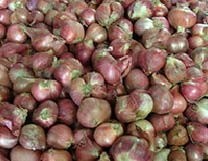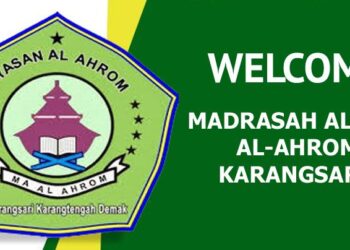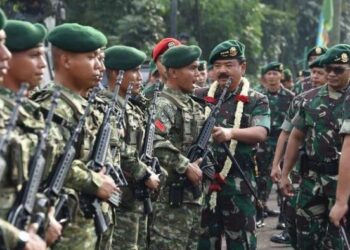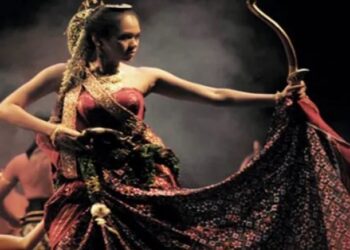The Improvement of Agrarian Culture for Farmers in Indonesia by the Dutch Colonials 1900-1941
Agricultural Education
The main task of the Department van Landbouw Nijverheid en Handel was to improve indigenous peasant as its system still used traditional methods. Not many of them can use agricultural tools, fertilizing plants, and selecting superior seeds. To guiding the indigenous peasant in modern land management, agricultural experts were needed to be placed in vast areas of Indonesia. For this reason, this new department required many agricultural scholars.
The scholars who were first used to guide peasants were agricultural graduates from the Wageningen Agricultural University, the Netherlands. They already existed in Indonesia and worked as agricultural consultants on European plantations. They were first recruited to become agricultural extension workers. In addition to working on European plantations, they also classified themselves as professionals, namely as agricultural consultants (landbouwconsulenten). As a professional group, they formed a professional organization called Vereeniging van Landbouwconsulenten (agricultural consultancy association). This group was made as the backbone when Landbouwschool was opened in Bogor in 1903 (Staatsblade. No. 71, 1903) and then changed to Middelbare Landbouw School in 1913. The school was established to bridge the gap of knowledge between Wageningen graduates from agricultural engineers and native peasants in rural areas. Therefore, the aim of this school was to educate native students for large plantation companies and to form advanced indigenous farmers, as well as to be able to use their knowledge for their own business or as native officials, and slowly exerted influence over the indigenous peasant. Based on Staatsblade 1903 number 71, education in agricultural schools lasted for three years. The School of Agriculture was intended to obtain theory and practice from young people who will later seek placement with large-scale agriculture in the Dutch East Indies, as well as from prospective indigenous officials. The school year started from the end of fasting time until the beginning of the next fast. This school provided scholarships for disadvantaged children to attend a complete threeyear school program. For students whose parents did not live in Buitenzorg (Bogor), travel expenses were supplied from their residence to Buitenzorg and returned to the student’s place of origin. Travel costs were also given to third-grade students (highest) to the areas of practice and trial fields (Regeeringsalmanak for NederlandscheIndie, 1912, p. 385).
Theoretical and practical education in school subjects was provided by teachers, selected from technical officials and private scholars associated with the Departement van Landbouw, Nijverheid, en Handel, or staff from Veerartsenijkundigen Dienst en van den Waterstaat staff in Buitenzorg (Bogor). The appointment of these teachers was authorized through a government decree dated July 31, 1903 Number. 48, which then set new standards for allowances given to teachers. The head of the division, who carried out daily management and supervisors, received a separate contribution (Staatsblade. 1904 no. 382).
Practical education can be carried out in experimental fields. Through experimental land, regular discussions, conversation, and written counseling, they can produce useful production in indigenous peasant. The vibrant botanical value of this scientific institution and the established experimental gardens led to the availability of suitable experimental fields for this education. This school also provided an opportunity for young people who wanted to continue their studies at the agricultural school in Wageningen but remain oriented to indigenous plants. Pilot gardens and demonstration plotted as useful learning facilities for education. The experimental field was used by students to find solutions to the problems they faced. On the demonstration ground, students were assigned to make the results of their research applicable (Een Inlandsche Landbouwschool, April 25, 1902). To be able to foster indigenous peasants, in 1911, the Director of the Department of Land van Landbouw, Nijverheid en Handel, promoted the establishment of a community agricultural extension agency named Landbouwvoorlichtingsdient. The establishment of this service was based on Lovink’s personal initiative as Director of the Department of van Landbouw, Nijverheid en Handel (Lekkerkerker, 1921, p. 8). With the establishment of this Landbouwvoorlichtingsdient, the government needed more agricultural experts.
In 1913 the Landbouw School was renamed the Middelbare Landbouw School (MLS). The school initially accommodated students from Dutch and Chinese citizens. 1903-1913 was a period when it was still a special bureaucracy. In the first three years, the number of European students ranged between ½ and 1/3 of all students. Then this comparison slowly changed. Until before 1912, this school accommodated 28 students, including a European and a Chinese (Middelbare landbouwschool te buitenzorg, June 11, 1920).
Read Also = Agricultural Extension Education In Indonesian The Colonial Period Part 1
MSL used the Dutch language of instruction. The aim was to provide opportunities for youth from any background to become experts in agriculture and plantations. By enjoying a monthly allowance, indigenous youths were educated to become aspirants of indigenous agricultural teachers, prospective employees at community credit banks, and prospective native forest inspectors. Accepted at this school were those who had a Meer Uitgebreid Lager Onderwijs (MULO) diploma, an educational institution for prospective native employees, and teacher schools for native teachers, those who moved to the 4th class of Hogere Burger School (HBS) with a five-year study period. Other students considered capable enough to take education in this school by taking an entrance examination.
Those who were proven to be unsuitable for further positions in school, according to their objectives, will be expelled from school, whether voluntary or not. Students leaving school before getting a diploma were asked to return the allowance they had enjoyed. Students who had graduated from this school were appointed as prospective indigenous agricultural teachers with a salary of f 75 per month. They were employed at agricultural schools in Wonosobo (Central Java), Soreang (West Java), Purworejo (Central Java), and Plumbon (West Java).
They were also expected to be the pioneers to establish similar institutions in several places or the agricultural extension service, to conduct research and to develop pilot plantations/gardens, and to become speakers in the field of agriculture. By the government’s decision on 26 April 1913 number 58 (Memorie van Overgave No. 345), the performance of indigenous agricultural teachers was again divided into two tasks: providing education about forestry and preparing a practical agricultural extension to farmers (Middelbare Landbouw School, July 26, 1913). MLS was then divided into two majors, namely agriculture and forestry. The agriculture department was developed to prepare agricultural extension workers. The forestry department was opened to prepare graduates to work in the forestry service (De Middelbare Landbouwschool, October 30, 1928).
Agricultural College in Wageningan had an essential role in providing agricultural teachers in Indonesia. This role was increasingly important after the founding of the Landbouwvoorlichtingsdient in 1911. To meet the needs of employees in the Extension Service, in 1918, the Agricultural College was renamed to be Agricultural University. The change in name was intended to better meet the needs of agricultural scholars in accordance with widespread agriculture in Indonesia. This university graduate was deployed to the regions as agricultural instructors with the title landbouwconsulent, which in Javanese society was known as Mr. Landbouw.
Initially, they were deployed to the Dutch East Indies. They must always be in contact with civil servants because they had the legality to deal directly with the indigenous population. In addition to language problems and understanding of the economy of indigenous farmers, relations with government employees (state employees) were the main obstacles that must be faced by them. H.J. Lovink, who had been the Director of the Department of Landbouw, Nijverheid, and Handel, and as the founder of Landbouwvoorlichtingsdienst acknowledged the need for agricultural teachers who also had an insight into the rural economy, as evidenced by the test program that candidates must take before the appointment (Landbouw, 1926, p. 26). Civil servants in the area did not like the arrival of agricultural scholars because they felt that their power had been intervened by newcomers who did not even understand the culture and even the local language (Prince, 2000, p. 249; De Landbouw Voorlichtingsdienst, March 21, 1935).
The agricultural experts who graduated from Wageningen, who were brought to the regions as extension workers, felt they did not know much to do what. They did not understand the local language. Communication with indigenous people was not easy without the mediation of local officials or local leaders. It made them frustrated. Therefore, at the beginning of their work as agricultural extension workers, they acted more as expert advisors to the local government, conducting research, and developing experimental gardens (Voorlichting en kleine landbouw, July 27, 1941). In the field, there were many complaints about the performance of Wageningen graduates. They were said only to understand the theory rather than practice in the field. Koens proposed that the graduates not only master the theory and method but also master the local culture (Koens, 1926).
An understanding of local culture, and the various types of local plants where Landbouwconsulent was assigned, were of concern to Koens. He applied his ideas when placed as Landbouwconsulent in Bondowoso (Besuki Residency), East Java. He also practiced agricultural courses as a chain of providing extension workers.
However, what Koens did then received criticism from L. J. Vroon, a Landbouwconsulent in Weltevreden, Batavia. The results of research conducted by Vroon at village schools in the Priyangan area (West Java) indicated that what was done about the agriculture course at the village schools in the Priyangan area could not be carried out. The community in the Priyangan area was different from the Besuki Residency area, which in general had large tracts of land. In Priyangan, peasants generally had small farms. They preferred to work on European plantations as wage labor rather than cultivating their agricultural land. They also preferred sending their children to religious schools rather than agriculture schools (Vroon, 1929). Furthermore, Vroon said that the socalled general education in agriculture, in particular, took very little into account the differences mentioned above, because it was not adapted to local conditions. In Priangan, they immediately turned into theories, which were not related to agricultural practices. Interest in agricultural education dropped dramatically, so it was decided in 1926 to close. The decline in the number of participants in agrarian courses in Priangan (West Java) had occurred since 1922. The report also explained that the fall was due to parents choosing to send their children to religious schools. In Ciwidey, Cianjur, Sumedang, Sukabumi, schools always lack students. Some schools even had to be closed because there were no students (Jaarverslag van den Landbouwvoorlichtingsdienst over 1920-1921, 1923, pp. 78-80).
In addition to MLS in Bogor, Sukabumi and Malang also established an agricultural school (Landbouwschool-Cultuur School). The same schools were also found in Pancasan, Bogor, and Solo. These schools were junior high school. In contrast to MLS, which was a senior high school, agricultural schools in Sukabumi (West Java), Malang (East Java), Pancasan (West Java), and Solo (Central Java) provided more practical education than theoretical. This education lasted for three years and can be followed by students who had completed primary school education. With the existence of this school, it was expected that the agricultural extension service would have a corps of indigenous labor that was suitable for low education (Middelbare landbouwschool te buitenzorg, June 11, 1920).
Cultuur School was the first advanced agricultural school or one level below MLS. This school accepted graduates of Holland Inlandsche school (HIS), Holland Chinese School (HCS), and Europeche Lager School (ELS). In 1920 students who had just graduated, were appointed as employees, and for six months were placed in various plantations to pass practical formation. The method proved unsuccessful in positioning them as field workers so that the following year a year of further education was given at the Muara nursery. Based on this condition, preparatory education for prospective agricultural extension staff in Muara, and in Pancasan (Bogor), was developed.
Read Also = Agricultural Extension Education In Indonesian The Colonial Period Part 1
Agricultural Extension Education
The agricultural extension service in the area was based on a circular from the Director of Agriculture, Crafts, and Trade on December 5, 1923, divided into two levels. At the first level, there was an extension of agricultural areas consisting of a collection of two or more agricultural areas (except for a few regions with special reasons). An experienced agriculture consultant led the agricultural information service at the regional level. The second level was the district / mayor’s agricultural extension area. At this level, the agricultural extension service was led by a younger agricultural consultant and submitted to the regional level agricultural consultant.
Based on a circular of the Director of Agriculture, Crafts and Trade dated December 5, 1923, concerning the reorganization of agricultural extension aimed at agricultural consultants throughout Indonesia. Starting from January 1924, the number of agricultural areas was established in seven locations in Java and temporarily five locations outside Java (Circular of the Head of Agriculture Section dated December 18, 1923).
Each agricultural area which became known as the Landbouw office as contained in Sinar Tani 1th (1) July 1926, had the main tasks that can be grouped into five types as follows: (1) Broadcasted knowledge about agriculture through courses, advice and the like; (2) Demonstrated/introduced the use of agricultural tools, good seeds, overcome plant pest attacks, and treat plant diseases; (3) Gave advice on irrigation, land rights and the like; (4) Gathered various information about various matters of indigenous peasant so that they can find out the problems related to the prosperity of the indigenous peasant; (5) Introduced ways to plant weaving that was good and suitable to those prevailing in the area. Landbouwvoorlichtingsdienst must be able to give advice not only in terms of agriculture and economics, whether an irrigation project can bring benefits or not from the farmer side (Onze landbouw voorlichtingsdient, April 17, 1941). But also in terms of helping farmers to obtain seeds, fertilizers and agricultural tools such as plows. Agricultural extension workers also helped farmers how to get credit from the farm business credit facilities provided by the government (van der Stock, 1925-1926).
A landbouwconsulent led to each agricultural area. These positions were all held by Dutch graduates from Wageningen. Its working area covered a vast area, across residencies, even across provinces. Theoretically, they were agricultural experts. However, they did not understand much about indigenous farming systems, the culture of the communities where they work, and their local languages. Thus, the big problem was how they could communicate with the local community. Because of that, the initial stage that they were working on was conducting various studies relating to various plants to obtain superior seeds that were suitable in the area. They also researched a variety of plant disease pests that hampered the growth of agricultural productivity of indigenous communities, as well as research on soil fertility and the use of fertilizers to fertilize the soil. To be able to communicate with the local community, they were assisted by agricultural experts from indigenous communities graduating from MLS in Bogor who carried out their duties as ajunct landbouwconsulent. Chained down to the lower levels, agricultural workers from the Landbouwschool graduates in Malang, Pancasan, Solo and Sukabumi were also placed. Employees of the agricultural extension service in 1925 consisted of 27 agricultural consultants, six agricultural expert employees, two employees for inland fisheries, six for plantation expert employees, 64 agricultural consultants and aspirants, 29 agricultural supervisors, four plantation supervisors and one paramedic for nurseries fruit. Therefore, one corps had 139 employees, all under the head of agriculture and divided into 21 regions, 14 employees each in Java and Madura, and seven outside Java (Jaarverslag van den Landbouwvoorlichtingsdienst over 1925, 1927, pp. 9-14; Het Nieuws van den dag voor Nederlandsch Indie, May 7, 1927).
To reach an extensive area, the government needed to increase the participation of students entering agricultural schools. As mentioned above, there were only two levels of agricultural schools, namely the level of agricultural high school (MLS), and the level of agricultural secondary school, Cultuur School). Cultuur schools were agricultural schools, mainly in Malang and Sukabumi. This school accepted students from male, Chinese, and Dutch people. The requirement was to have a healthy body and sufficient knowledge, even 14 years old and not more than 17 years. Those who can be accepted at this school were Hollands Inlandsche-School (HIS) graduates, those who had passed the MULO entrance exam, had passed the Europesch Lagere School (ELS), Hollandsch Chinese School (HCS), or those who had received a recommendation from the director of the Ministry of Agriculture stated that they were able to attend education at the school (Pemimpin Tani, No. 1, January 1930).
Agricultural schools in Sukabumi and Malang were established to provide agricultural education at a lower level. The training was given for three years. In the third year, these school students were divided into several majors or divisions, namely the forest and agriculture and horticulture divisions. The forest and agriculture division was prepared to educate prospective agricultural supervisors. In contrast, the horticulture division was provided to educate students who would work as agricultural extension workers (Regeeringslmanak voor Nederlandsche-Indie, 1926, p. 321).
Next Article i will explain how the result and impact on farmers in Indonesia during the Dutch Colonial period. Thanks and keep reading other article also.














